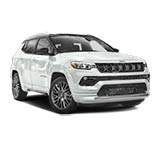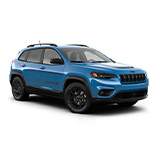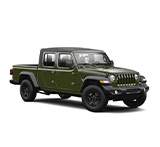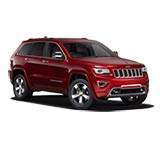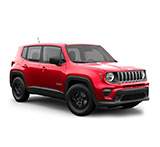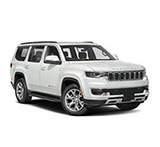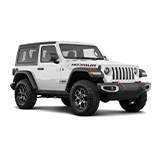Jeep
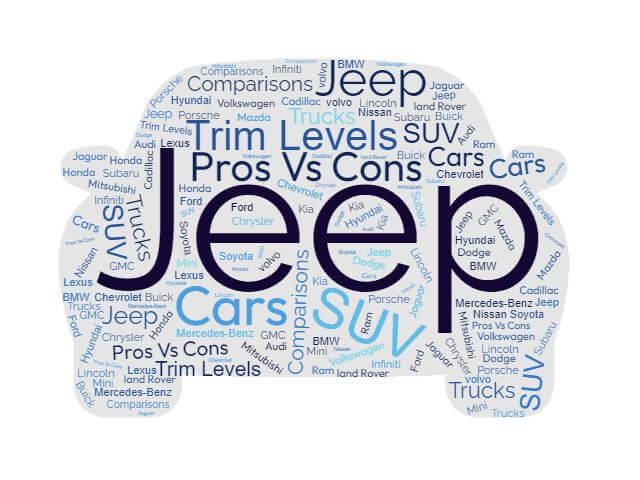
About Jeep
The Jeep has become an icon in automotive history. The distinct shape of the Wrangler model is evident and the trademark circular headlights and seven-slot grill have become synonymous with the brand, itself. But how much do you know about the history of this remarkable off-road brand and its ties to the United States?
1941 – The First Jeep
The first Jeep, the Willys MS, was produced in 1941 for military use during World War II and Jeep first began producing civilian vehicles in 1945. While it is disputed about the origins of the name Jeep, most concede that it was most likely an alteration of the “GP” (Government Purpose). This seems likely as the term Humvee came about as an alteration of HMMWV (High-Mobility, Multi-Purpose Wheeled Vehicle) in the same way.
1950 – The First Variation
After World War II ended, Jeep was encouraged to investigate new alternatives for additional uses the Jeep vehicle could serve. The CJ-V35/U was created (just over 1,000 made) with the designed purpose to operate under water for portions of time with a “scuba system” on the engine allowing airflow from above the vehicle.
1965 – Jeep Turns to Trucks
While Jeeps are known across the world for their military use and their civilian off-road “buggy” style, Jeep has produced a number of trucks over the duration of the brand’s existence. In 1965, Jeep developed the M715, an army truck, and this model was used extensively in the Vietnam War. The vehicle is still used heavily in other countries outside the US and, today, is produced under license by Kia.
1987 – A New Branding
Since the original (Willys MS in 1941), Jeep has gone through numerous brand owners through the years, but perhaps the most notable ownership exchange occurred by the Chrysler Corporation. In 1987, with Jeep struggling to make money for the American Motor Company, Chrysler purchased the brand. This new ownership produced, for civilians, the most notable change in Jeep branding to date: the creation of the Jeep Wrangler model.
1987 – Jeep Wrangler
First produced in 1987, for most the Jeep Wrangler is the iconic vehicle that defines Jeep. Known for its simplistic design and rugged off-road capabilities, the Wrangler has maintained its place as a staple in the Jeep model lineup since its creation. The original YJ model ran from 1987-1995, the TJ model ran from 1997-2006, and the JK model has run from 2007-present.
1993 – A New Off-Roading Experience
As the surge of SUV (Sport Utility Vehicles) popularity increased in America, the Chrysler Corporation found a new opportunity to incorporate their off-roading brand for new vehicle options that bridged a gap between rugged off-roading capabilities and regal, day-to-day style and use. The result of this was the Jeep Grand Cherokee.
While the Jeep Cherokee has ties back as far as 1983 through the American Motor Company, the Grand Cherokee was created solely with the purpose of modeling Jeep’s known toughness into an everyday vehicle that could operate as functionally for a trip to soccer practice as it could through a flooded backcountry. This was the first officially badged Chrysler Vehicle. The first iteration of the Grand Cherokee, the ZJ, ran from 1993-1998.
The second generation, the WJ, ran from 1999-2004. The third generation, the WK, became a far cry from the original, sporting options like a DVD system in the rear and heavily emphasized luxury. The current version, the WK2, offers a number of models with varying levels of packages and add-on items.
2007 – New Roads and New Customers
Chrysler continued to search out new ways to offer their vehicles to increasing demands and varying buyer populations. In 2007, Jeep introduced two new variations, hoping for success that didn’t come with vehicle models like the Liberty. Jeep unveiled the Compass and the Patriot. The Compass, a crossover SUV, involved a much smaller body and vehicle base style whereas the Patriot body style is easily recognizable to that of early model Jeep Grand Cherokees but at a much lower price point. Jeep moved into the early 2010s with vehicles in each major price point, from low-end (the Jeep Patriot), to midrange (the Jeep Compass, the Jeep Wrangler), to high-end (the Jeep Grand Cherokee).
2013 – Old Becomes New
In 2013, Jeep announced it would be bringing back a new version of a previously discontinued model, the Jeep Cherokee. Receiving a major facelift from its early 1990s counterpart, the KL version of the Jeep Cherokee reflected a body style much more similar to that of the current Jeep Grand Cherokee but at a lower price range, offering fewer add-on packages. The new style Jeep Cherokee offers many of the same details of the early Jeep Grand Cherokees with updated performance and multiple engine options, including mileage-friendly options (similar to those offered in the newest generation Jeep Grand Cherokee).
2014 – New Potentials
In 2014, Jeep announced the newest model that will be produced in the US, the Jeep Renegade. A subcompact crossover SUV, this vehicle has many new concept ideas that are aimed at pushing Jeep into the new forefront of the automotive market.
Jeep has become synonymous with rugged, tough, off-road capabilities. The Jeep Wrangler, perhaps the most well-known and universally-popular of its models is simplistic in its design and known for its overall durability. Owners of Jeeps have become a sort of brotherhood that offers in a high level of companionship. Jeeps are not only known for what they offer in the way of durability, but also their customizability. Many Jeeps exist on the road but, depending on their desired use, are sure to be found in a number of varied, customizable styles.

